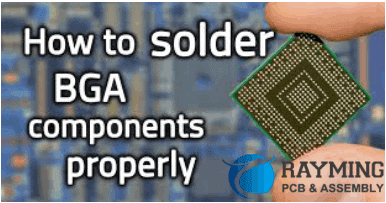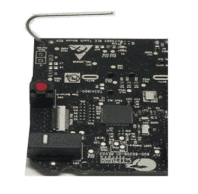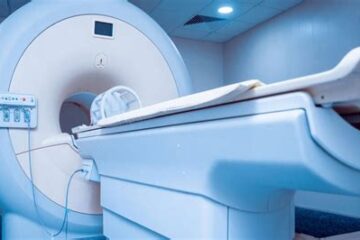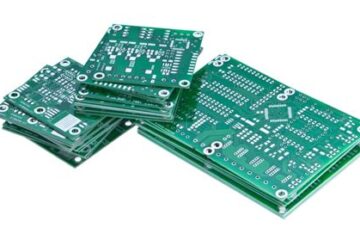Introduction
Surface mount technology (SMT) has revolutionized the electronics assembly industry. SMT enables the fabrication of smaller, lighter, and more reliable electronic devices by allowing components to be mounted directly onto the surface of printed circuit boards (PCBs) rather than through holes. A key technology that enabled this transition was automated optical inspection (AOI). AOI machines use computer vision to quickly and accurately inspect assembled PCBs for defects. In particular, SMT AOI machines have evolved dramatically in terms of speed, resolution, and intelligence over the past few decades.
History of SMT AOI Machines
First Generation (1980s-1990s)
The first SMT AOI machines emerged in the 1980s and were relatively simple. They captured low resolution images of PCBs and used basic template matching to detect missing or misaligned components. These early AOIs were slow, inspecting around 10 cm2 per second, and had limited intelligence. Their main role was identifying gross defects to supplement human visual inspection.
Second Generation (1990s-2000s)
In the 1990s, a second generation of SMT AOI machines emerged with higher resolution cameras, improved lighting, and faster processing. This allowed inspection speeds of up to 25 cm2 per second and detection of smaller defects like poor solder joints. Software also evolved to include pattern matching and basic rules, reducing the need for templates.
Third Generation (2000s-Present)
The third generation of SMT AOI machines introduced several key innovations in speed, resolution, and intelligence:
- High speed linescan cameras and advanced lighting reached speeds over 100 cm2 per second.
- High resolution area scan cameras enabled detection of micro defects.
- Advanced algorithms like 3D solder joint inspection improved detection of poor connections.
- Machine learning has enabled inspection without templates and identification of new defect types.
Today’s SMT AOI machines incorporate many cutting edge technologies for intelligent inspection.
Key Components of Modern SMT AOI Machines
Modern SMT AOI machines leverage a variety of hardware and software to deliver intelligent, high speed inspection:
Imaging Technology
- Area scan cameras – High resolution color or monochrome cameras create detailed maps of the PCB surface.
- Linescan cameras – Very high speed linear cameras quickly capture entire PCBs in a single pass.
- Structured lighting – Special lighting techniques like multi-angle LEDs or lasers enhance image details.
Conveyor System
- High precision platens – Stable platforms securely hold PCBs during inspection.
- Linear motors – Provide smooth, vibration-free motion at high speeds.
Software
- CAD-based programming – Machine setup is guided by PCB design data.
- Detection algorithms – Advanced pattern matching and machine learning find defects.
- Analytics – Statistical analysis and data mining identify process issues.
- Communication protocols – Integration with other factory equipment through SMEMA, SECS/GEM, etc.
Key Inspection Capabilities
Modern SMT AOI machines can detect an array of potential PCB defects with high reliability:
- Missing components
- Wrong or out of place components
- Incorrect orientation
- Excess solder or shorts
- Insufficient solder
- Tombstoning
- Solder balls/splatter
This detailed inspection at high speeds makes AOI a critical quality control tool for electronics manufacturers.
Advantages of SMT AOI Machines

SMT AOI offers major benefits over manual visual inspection:
- Speed – Inspection rates 100x faster than human operators.
- Accuracy – Defect detection rates exceeding 95% with low false calls.
- Reliability – Repeatable results not subject to fatigue or variation.
- Analytics – Data mining reveals process insights like defect trends.
- Communication – Integration with other equipment for process optimization.
As volumes have increased and device complexity has grown, AOI has become an indispensable automation technology.
Limitations of SMT AOI Machines
While extremely capable, SMT AOI has some limitations:
- Upfront programming – Require programming and training for new PCB designs.
- Detectable defects – Some defects like microcracks or resistivity issues can be difficult to detect.
- False calls – No system is perfect, algorithm tweaking is sometimes needed to minimize false fails.
- Cost – High end systems require significant capital investment.
- Expertise – Trained programmers needed to properly utilize advanced features.
AOI complements technologies like ICT and functional testing to fully validate assembled PCBs.
The Future of SMT AOI
SMT AOI machines have progressed enormously, but innovation continues as the technology seeks to address remaining limitations. Some emerging trends in AOI development include:
- Even faster inspection – New camera, lighting, and motion innovations to boost speed.
- Improved algorithms – Advanced neural networks and AI for defect detection.
- New modalities – Additional inspection types like thermal imaging or ultrasound.
- Greater intelligence – Self-programming abilities and optimization of upstream processes.
- User experience – More intuitive interfaces and software capabilities.
- Connectivity – Leveraging IIoT, big data, and cloud computing.
Conclusion
AOI has transformed from early template-based oddity verification to an intelligent rapid inspection tool leveraging advanced imaging, algorithms, motion systems, and data analytics. While limitations remain, continued innovation is unlocking the potential of AOI to enable smarter manufacturing with zero defects. Adoption of the latest AOI technology is essential for electronics manufacturers to maintain quality and process control as products and volumes grow more complex.
Frequently Asked Questions about SMT AOI Machines

What are the key differences between an area scan camera and a linescan camera in AOI?
The main differences are in how they capture images:
- Area scan cameras take a snapshot of the entire PCB at once. This provides high resolution images but lower inspection speed.
- Linescan cameras continuously capture a narrow view of the PCB as it moves under the camera. This enables very high speeds but sacrifices some resolution.
What types of lighting are used in AOI machines?
Common lighting technologies include:
- LEDs – Programmable multi-angle LED rings provide uniform illumination.
- Lasers – Lasers can be used to create contours and shadows that highlight solder joint details.
- Structured lighting – Lighting projected in patterns helps overcome specularity.
How accurate are modern AOI systems?
With advanced algorithms and machine learning, the best AOI systems achieve over 95% detection rates with false call rates under 2%. This performance exceeds human visual inspection.
What communication protocols are used by AOI machines?
Common standards used for equipment communication and data exchange include:
- SMEMA – Surface Mount Equipment Manufacturers Association
- SECS/GEM – Semiconductor Equipment Communications Standard / Generic Equipment Model
These allow AOI machines to share information with printers, placement machines, etc.
Can AOI fully replace in-circuit test (ICT) or functional test?
In general, no. While AOI can find many assembly defects, ICT and functional test can detect electrical failures and performance issues that AOI can’t. AOI complements these technologies for complete PCB verification.



0 Comments